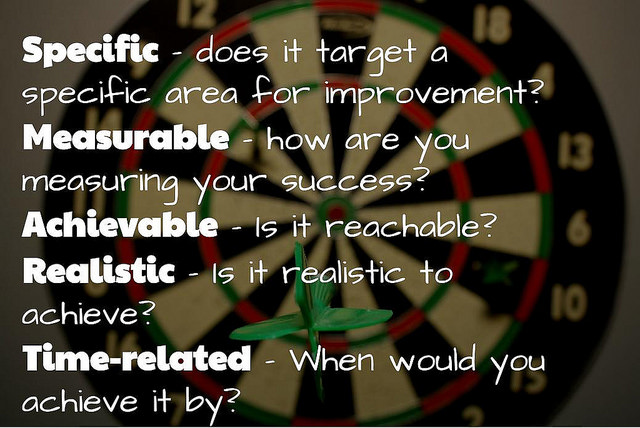|
|
|
Archive for October, 2018
Monday, October 15th, 2018

Poking through 11+ years of posts I find information that’s as useful now as when it was written.
Golden Oldies is a collection of the most relevant and timeless posts during that time.
Last week I shared an article I wrote years ago for The Conference Board magazine. Due to a mix-up I didn’t get the actual magazine for several months, which provided me with an objectivity I wouldn’t have had otherwise.
Read other Golden Oldies here.
A few months ago I received an email from the editor of The Conference Board Review inviting me to submit an article for the next issue.
The Conference Board Review is the quarterly magazine of The Conference Board, the world’s preeminent business membership and research organization. Founded in 1976, TCB Review is a magazine of ideas and opinion that raises tough questions about leading-edge issues at the intersection of business and society.
And not just for the online version, but to appear in the actual magazine.
I read the TCB article online (no longer available) and that was cool, but the thrill of seeing something I wrote in a slick magazine like TCB Review really affected me.
I often go back and read stuff I wrote days, months, even years ago and it never ceases to surprise me.
When I reread it in the actual magazine I was blown away.
As are many of us when we revisit something we did a week or a month or longer in the past.
It happens because we see it from the outside—and we are blown away.
We look at it and marvel; the quality and execution impresses; the inherent value surprises; and we revel in the fact that it is our creation.
It doesn’t matter what it is, big or small; whether it was produced at work or elsewhere; it doesn’t even matter if anyone else will ever see it.
We look and we are amazed.
Now it’s your turn; review some of the things you’ve done in the past and I’ll bet several of them will blow you away, too.
Image credit: The Conference Board
Posted in Golden Oldies, Personal Growth | No Comments »
Friday, October 12th, 2018

A Friday series exploring Startups and the people who make them go. Read all If the Shoe Fits posts here.
Meet your target audience — no matter their age.

Image credit: Frits Ahlefeldt, AKA, HikingArtist
Posted in Entrepreneurs, If the Shoe Fits | No Comments »
Thursday, October 11th, 2018

I have been at my new company for a little more than a month now and continue to learn more each day. I stumbled across something last week that impacted me more the longer I dwelled on it and I thought it important to share.
We use #slack at work for all internal communications and there are several channels that cover a variety of topics. This ranges from marketing info, sales data and the most important channel of all… random.
This channel is exactly as it sounds. You can post whatever you like in here as long as it is not offensive. People post pics of cute dogs, random news stories and funny memes.
However, there is a deeper element that I have come to appreciate.
I work for a geospatial data collection company and our platform allows our users to create apps that can meet their specific needs when it comes to data collection.
If a utility company wants to document where streetlights are located they can create an app to do so. Want to track where poachers are operating in the African bush? We have you covered with an app. What if you want to track and document something a bit less serious, say what type of booze you are consuming each night?
Bingo, that’s right. Some enterprising individual in our company created an app on our platform that can track what drinks you consume. You can include a picture, your location, 1-5 star rating and any comments you may have on the drink.
However, they took it a step further. After documenting this event how can you tell the world, or in this case our company, that you consumed a wonderful beverage? Simple, you link it to the random channel in #slack and every time you create a log it sends that info to be posted on the random channel.
Each night I get to see what my team mates are consuming and the various comments people post. How does this tie into culture? It is a purely voluntary action on the part of those submitting posts. It’s not pushed by management or tracked. It’s a fun way to interact with your colleagues after hours, while enjoying the comfort of home.
Not a bad way to end the night, in my opinion.
Image credit: Slack
Posted in Communication, Culture, Ryan's Journal | No Comments »
Wednesday, October 10th, 2018

It is said, “Cut off the head, and the body will wither.” During World War II, the Germans made every effort to kill off enemy officers, assuming that without their leadership Allied troops would crumble. But a funny thing happened: Every time a leader was put out of commission, someone else stepped up and assumed the role—whether or not he held rank.
The impromptu replacements didn’t think about it, discuss it, or worry about whether they could successfully do it; in the chaos of battle, they took the initiative, did what was necessary, and became “leaders in the instance.”
Leaders aren’t born, nor are they promoted, appointed, or anointed. Leaders develop by doing; they develop with assistance from their managers and company, without it, and, sometimes, in spite of it.
Once in a management role, they have no choice, because today’s workplace requires an enlightened, demanding, and independent workforce that has no problem voting with its feet when unhappy.
Decades ago, a major disservice was done to business when the idea that managers and leaders were separate and that leaders were “better” than managers was introduced. Sadly, that attitude is still in force today, but look carefully at these distinctions, from Warren Bennis’s On Becoming a Leader, and ask yourself how well any manager or leader can perform in the twenty-first-century workplace without both sets of skills.
- The manager maintains; the leader develops.
- The manager focuses on systems and structure; the leader focuses on people.
- The manager relies on control; the leader inspires trust.
- The manager accepts reality; the leader investigates it.
- The manager does things right; the leader does the right thing.
The difference between being labeled a good, mediocre, or bad manager is often the difference between how many of the so-called leadership traits the manager embraces. Leaders are said to have vision and the ability to communicate it to their people, but that is exactly what every manager, even the lowest-level team leader, must do, within the scope of their role, if they want their people to be productive and innovative.
It is good to remember that people do not join companies because of the CEO or a few top executives—they join for the culture and the people, specifically their team and manager.
These two areas are tightly interwoven; there is an overall company culture and a subculture perpetrated by the manager to whom they report, no matter how junior. And each subculture is influenced more by the person directly above than by the person in the corner office.
Therefore, disseminating these skills throughout the organization requires a concerted effort that starts with the CEO and extends across the executive ranks, because it is on the rocky shores of culture that this effort usually sinks.
To lead means to show initiative, which means taking risks and braving the possibility of failure.
In a culture where failure is cause for anything from private sarcasm to public belittling and even dismissal, who in their right mind will show initiative? If the messenger is killed, who will speak up when the news is bad?
In short, senior managers have no choice but to push leadership down through the ranks—just as responsibility was pushed down forty years ago, as organizations flattened and companies stripped away management levels.
Life and work are always about choices, and promoting leadership throughout your part of the organization is a matter of choice, whether or not those above you make the same choice.
This article was first published in the October 2009 issue of The Conference Board magazine.
Image credit: Free Images
Posted in Culture, Golden Oldies, Leadership, Personal Growth | 1 Comment »
Tuesday, October 9th, 2018

Way back, when I was a recruiter, I coined a term for an attitude that impacted people from senior ranks down through support staff and production workers.
I called it ego-merge and it happened when people so entwined their identity with their company’s that they took personal responsibility for its successes and failures.
Last week we looked at companies with perks designed to keep people on site, so that the company becomes their life.
Both situations are highly addictive.
Even companies with benefits designed to foster better work-life integration/balance can be considered addictive, since they are difficult to leave.
Most addictive of all are great managers, even when special perks and over-the-top benefits are missing.
Sadly, abusive companies/managers are also addictive, just as abusive homes/partners/relatives are.
So what do you do if both good and bad can be addictive?
Know yourself.
Know what’s really important to you, not to your friends or what looks cool on social media.
Make a list.
Know what holds your company has on you.
Make a list.
Compare the lists.
Revisit each list at least once a year, more often if something major happens in your life or company.
Edit them based on who you/company are, not who you/company were.
Image credit: David Prasad
Posted in Culture, Ducks In A Row, Personal Growth | No Comments »
Monday, October 8th, 2018

Poking through 12+ years of posts I find information that’s as useful now as when it was written.
Golden Oldies is a collection of the most relevant and timeless posts during that time.
Last Monday we considered whether your goals were your own or dictated by outside pressure. Today, we’ll look at something I wrote way back in2006 when I started this blog — my approach to making goals and to-do lists a positive experience, i.e., work.
Read other Golden Oldies here.
A client sent me a list of what he plans to accomplish in Q4—it was a very long list. I find most people have similar lists and, although all the items are necessary, the list can be daunting.
As opposed to listing just goals, most people’s lists include everything they need/want to accomplish in that time frame, both goals and to-do’s, hence the long list.
You’ll still need to do the work, but here’s a simple trick to help tame your list, raise your productivity, and give yourself more feelings of accomplishment and fewer of frustration.
I’ve found that the items on these lists fall into three categories:
- Normal work: includes all the things that you need to do that quarter that are part of your job description. (executing marketing plans, making sales calls, hiring staff; doing reviews, etc.)
- Goals: in addition to normal, daily tasks (increase manufacturing output 8% in Q4; write operating plan for 2007; reduce attrition 10%, etc.)
- Behavioral changes: refers to MAP changes (improve attitude; give and accept constructive criticism)
Goals usually require a great deal more planning and take longer to come to fruition, hence the longer deadlines. They are often more strategic and can involve other people’s activities. One major and two minor goals are the most that can be handled efficiently and be accomplished.
Normal work doesn’t need to list every single thing you do. It’s more a matter of personal taste whether you list each thing or just the major tasks that aren’t ongoing on a daily basis. When listing major tasks, e.g., hiring, be sure to set a deadline, be reasonable, but a deadline will keep you on track and keep the item from getting pushed to the back burner. It’s easy to mix up goals and work. For example, you may think of filling a req as a goal, but it’s really part of your normal work as a manager.
Behavioral changes need to be specific, so, rather than “improve attitude,” specify three things that will accomplish that (stay positive, smile, be friendly). MAP changes require staying aware until the desired change becomes a habit and three is about the max most people can monitor at once and, even that, can be a stretch. However, if you made even one MAP change each quarter the over all change in that year would be phenomenal.
Now for the trick. Using three columns with these headings,
- drag and drop your list into the appropriate column;
- keep shuffling them until you’re sure each is in the right place;
- prioritize them; and
- move any extra items (more than three each) from Behaviors or Goals to a separate holding doc—that’s why prioritizing them is so important.
Print Behavioral changes and stick them on your monitor, tape them to the dashboard, up them on a wall—somewhere you will always see it because out of site is out of mind and you need to stay constantly aware to build the habit.
Using the deadlines, incorporate the others into your normal planning process.
Be sure to do a reality check using normal and worst case analysis. You aren’t Super(wo)man, so be sure that what you want to accomplish can be done. If not, adjust your lists accordingly, keeping it firmly in mind that your object is to increase your productivity, not your frustration.
Finally, once you’re clear on the process, share it with your organization, not just the managers, but with everyone
Image credit: Aaron Davis
Posted in Golden Oldies, Personal Growth | No Comments »
Friday, October 5th, 2018

A Friday series exploring Startups and the people who make them go. Read all If the Shoe Fits posts here.
From the start of my career, especially as a headhunter, AKA, recruiter, I have done my best to drum the following mantra into the heads of both hiring managers and candidates.
Life is LARGE; career is but a small part of the whole. A major problem is created when the adjectives (and, therefore, the attitudes) are reversed.
Most agreed, but that was then…
These days, too many companies intentionally design their perks and campus to encourage people to stay — like Facebook.
My greeter walked me to one of the complex’s main arteries from Hacker Way toward Main Street. “The campus was designed to be a cross between Disneyland and downtown Palo Alto.”
If everything is at work why leave?
Maybe to have a life?
Of course, before you can leave you need to get your work done and it’s hard to be productive with all the distractions.
“It’s no wonder people are working longer, earlier, later, on weekends, and whenever they have a spare moment,” Jason Fried writes in the new book It Doesn’t Have to be Crazy at Work, which hits the shelves in the US today (Oct. 2). “People can’t get work done at work anymore.”
Forbes recently published a Quora response to the question What People Won’t Tell You About Working At A Top Tech Company that presents both the pros and cons of working for a company with the main goal of arranging its perks and compensation so people won’t leave.
Not just won’t leave, but can’t leave.
It’s not just the perks, but the compensation. Even those willing to take a reduced package will find other companies hesitant to hire them. And when the downturn comes, as it always does, they will be in an even worse position.
A couple of weeks ago Ryan accepted a new position and I wrote his new company, Spatial Networks, up as a role model.
It’s proof companies don’t have to turn themselves into a field of poppies to attract and retain great talent. We’ll look at more examples next week.
Image credit: HikingArtist
Posted in Compensation, Culture, If the Shoe Fits, Retention | 1 Comment »
Thursday, October 4th, 2018

I wrote on this a bit last week.
When it comes to open floor plans you have the ability to break concentration pretty quickly.
Maybe you ask a work-related question, or you see someone walk by who catches your attention, or it could be the other meeting occurring five feet away that draws your attention.
All in all, it can add up to a loud and unproductive environment.
That said, there is another issue at hand: the collective focus of our country.
I have political leanings (most folks do), but I don’t address them in this forum.
However, I have found it is very difficult to focus with the hyper-political environment we are in right now.
The latest on Trump, Supreme Court nominees, and international trade dominate the conversations. Even at work, I have found it can be a minefield to even poke into certain topics. How do we overcome this?
One thing I have started doing is actually turning off the news and not keeping up with every little change to the topics of the day; it can be a bit freeing. At the same time, I am not in a position where I can be completely ignorant of what is happening.
I have also found that there is common ground among my co-workers on how divisive it has all become.
And it is a lot harder to push your politics on someone when they are standing right in front of you. The shield of anonymity is gone.
I have found that reading negative press also has the added effect of making me less productive.
I focus on the negative and it goes into my head. What good is all that?
So maybe next week we can focus on the positive and move forward?
Most of us get presidential alerts on our phone now, but we can also turn them off.
Image credit: VirtualWolf
Posted in Communication, Personal Growth, Ryan's Journal | No Comments »
Wednesday, October 3rd, 2018

Pardon this semi-rant, but humans are so arrogant.
Tech tech are some of the worst, but fintech, animal tech and food tech, may even be worse.
By word and/or action, the idea that they know best resonates through everything they do.
Banker arrogance, and the products it produced, gave us the 2008 financial meltdown.
Animal breeders gave us pets, with a host of enhanced medical problems, in return for a certain look.
And long before people freaked out over today’s GMO, humans have been doing selective breeding for more than 9000 years.
Boy, did they succeed.
On Sunday, the Sydney Morning Herald reported that zookeepers at the Melbourne Zoo are weening some animals off of fruits because they were too sweet for the animals’ own good. Red pandas and primates had been gaining weight, and some had signs of tooth decay as well.
Whole fruits, not juice (aka liquid sugar) are supposed to be healthy for humans, because they are high in fiber, but when the sugar content is increased so drastically do the rules hold? Does the effort our bodies must make to process the fiber truly offset the higher sugar content?
I can’t really answer that, but I do know there aren’t a lot of people who choose veggies over fruit when offered a choice.
Image credit: Michael Tieso
Posted in Entrepreneurs, Innovation | No Comments »
Tuesday, October 2nd, 2018

I’ve made my own hiring errors, as have we all (anyone who claims otherwise is lying).
So when interviewing, we have a few company-wide mantras (for lack of a better term) to guide us.
I find this one goes a long way to ensuring we don’t get caught up in people’s past, rather, it helps us focus on attitude and potential.
“The main ingredient of stardom is the rest of the team.” — John Wooden, basketball player and coach
Look at all the people who were stars at places like Goldman Sachs or Google, such as Marissa Meyer, or GE’s Bob Nardelli (who nearly destroyed Home Depot), who were unable to maintain their level of performance outside the culture, systems and management of that specific company.
That’s why it’s always dangerous to hire stars — more than anything else they are a product of their environment.
Image credit: Lee Haywood
Posted in Culture, Ducks In A Row, Hiring | No Comments »
|
 Subscribe to
Subscribe to
MAPping Company Success
About Miki 
Clarify your exec summary, website, etc.
Have a quick question or just want to chat? Feel free to write or call me at 360.335.8054
The 12 Ingredients of a Fillable Req
CheatSheet for InterviewERS
CheatSheet for InterviewEEs™
Give your mind a rest. Here are 4 quick ways to get rid of kinks, break a logjam or juice your creativity!
Creative mousing
Bubblewrap!
Animal innovation
Brain teaser
The latest disaster is here at home; donate to the East Coast recovery efforts now!
Text REDCROSS to 90999 to make a $10 donation or call 00.733.2767. $10 really really does make a difference and you'll never miss it.
And always donate what you can whenever you can
The following accept cash and in-kind donations: Doctors Without Borders, UNICEF, Red Cross, World Food Program, Save the Children
*/
?>About Miki
About KG
Clarify your exec summary, website, marketing collateral, etc.
Have a question or just want to chat @ no cost? Feel free to write
Download useful assistance now.
Entrepreneurs face difficulties that are hard for most people to imagine, let alone understand. You can find anonymous help and connections that do understand at 7 cups of tea.
Crises never end.
$10 really does make a difference and you’ll never miss it,
while $10 a month has exponential power.
Always donate what you can whenever you can.
The following accept cash and in-kind donations:
|















